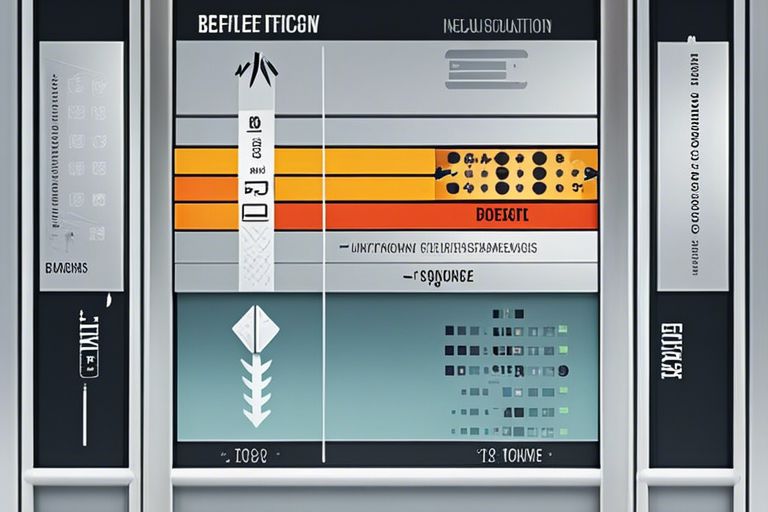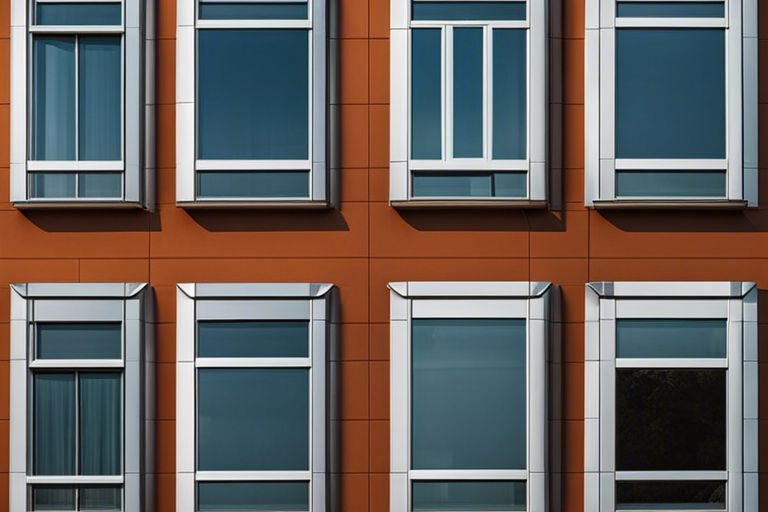When it comes to flat rooflights, integrating blinds and shades can significantly enhance both the functionality and aesthetic appeal of a space. Blinds and shades not only provide privacy and light control, but they also help regulate temperature and protect against glare and UV rays. However, with flat rooflights, the installation process and compatibility are crucial factors to consider. In this blog post, we will investigate into the importance of integrating blinds and shades with flat rooflights, highlighting the benefits it brings and the essential considerations to ensure a successful integration.
Key Takeaways:
- Enhanced aesthetics: Integrating blinds and shades with flat rooflights can enhance the overall aesthetics of the space, providing a sleek and modern look.
- Improved light control: The integration allows for better control over the amount of natural light entering the room, providing comfort and convenience to the occupants.
- Energy efficiency: By using blinds and shades in conjunction with flat rooflights, energy efficiency can be improved by regulating the indoor temperature and reducing the need for artificial lighting.

Understanding Flat Rooflights
In this chapter, we will examine into the world of flat rooflights and explore their various types and benefits when integrated into modern building design.
Types of Flat Rooflights
There are several types of flat rooflights available in the market, each offering unique features and advantages. Some of the most common types include fixed, opening, walk-on, pyramid, and lantern rooflights. Fixed rooflights are stationary and provide a continuous source of natural light, while opening rooflights offer ventilation in addition to daylight. Walk-on rooflights are designed to be strong enough to bear weight, allowing for rooftop access. Pyramid rooflights add a stylish architectural element to a building, and lantern rooflights are ideal for adding height and drama to a room.
This information can be summarised in the following table:
| Fixed Rooflights | Stationary, continuous natural light source |
| Opening Rooflights | Provide ventilation in addition to daylight |
| Walk-on Rooflights | Strong enough to bear weight for rooftop access |
| Pyramid Rooflights | Add stylish architectural element |
| Lantern Rooflights | Enhance height and drama in a room |
Benefits of Flat Rooflights in Building Design
Flat rooflights play a crucial role in modern building design by maximising natural light, creating a sense of space, and enhancing the aesthetic appeal of a property. They also improve energy efficiency by reducing the need for artificial lighting during the day, thus lowering electricity bills and carbon footprint.
Integrating flat rooflights into the design of a building can significantly improve the overall well-being of its occupants by providing a connection to the outdoors, increasing vitamin D intake, and promoting a healthier living environment. Additionally, flat rooflights can enhance property value by adding a luxurious touch and attracting potential buyers looking for modern, sustainable features in a building.
Blinds and Shades for Flat Rooflights
Integrating blinds and shades with flat rooflights can offer both practical and aesthetic benefits. By adding blinds or shades to your rooflights, you can control the amount of light entering the space, reduce glare, and increase privacy. Additionally, the right choice of blinds or shades can enhance the overall look of your room, complementing your interior design.
Reasons for Integrating Blinds and Shades
There are several reasons why integrating blinds and shades with flat rooflights can be advantageous. Firstly, blinds and shades allow you to adjust the amount of light entering the room, giving you control over brightness levels and reducing UV exposure to your furnishings. Secondly, they help to regulate the room temperature by providing insulation and blocking out heat in the summer and retaining warmth in the winter. Integrating blinds and shades enhances the privacy of your space, especially in urban environments, offering a sense of security. Lastly, adding blinds or shades can improve the aesthetics of your interior space, creating a cohesive look and enhancing the overall ambiance.
Types of Blinds and Shades Suitable for Flat Rooflights
When it comes to choosing blinds and shades for flat rooflights, it’s important to consider the specific requirements of your space. Roller blinds are a popular choice for rooflights as they are sleek, easy to operate, and offer a modern look. Pleated blinds are another suitable option, providing a softer aesthetic while still offering effective light control. Venetian blinds can be used to adjust light levels precisely, making them ideal for spaces where varying levels of light are desired. Blackout blinds are perfect for bedrooms or home cinema rooms where complete darkness is required. Skylight shades are designed specifically for rooflights, offering a tailored solution that fits seamlessly with the window.
| Types of Blinds and Shades | Suitability |
|---|---|
| Roller blinds | Sleek and modern, easy operation |
| Pleated blinds | Softer aesthetic, effective light control |
| Venetian blinds | Precise light level adjustment |
| Blackout blinds | Ideal for complete darkness |
| Skylight shades | Tailored solution for rooflights |
Choosing the right type of blinds or shades for your flat rooflights can significantly impact the comfort and functionality of your space. By considering factors such as light control, insulation, aesthetics, and specific room requirements, you can select the most suitable option for your needs. Assume that investing in quality blinds or shades is an investment in the overall atmosphere and usability of your living or working space.

Implementation Strategies
Design Considerations for Integration
When integrating blinds and shades with flat rooflights, it is crucial to consider the design aspects to ensure a seamless and functional outcome. Firstly, you will need to determine the type of blinds or shades that best suit the rooflight style and the overall design scheme of the space. Secondly, consider the placement of the blinds or shades to maximise light control and privacy while maintaining a sleek and modern look.
Moreover, it is essential to think about the operation and control mechanisms of the blinds or shades. Choose systems that are easy to use and integrate seamlessly with the rooflight structure for a hassle-free experience.
Installing Blinds and Shades with Flat Rooflights
Installing blinds and shades with flat rooflights requires precision and expertise to ensure they function correctly and enhance the overall design of the space. Start by carefully measuring the dimensions of the rooflight to ensure a perfect fit for the blinds or shades. Next, make sure to follow the manufacturer’s instructions meticulously during the installation process to avoid any issues.
Additionally, consider the maintenance requirements of the blinds or shades to prolong their lifespan and keep them looking pristine. Regular cleaning and checks for wear and tear will help maintain their efficiency and aesthetics over time.
For further information on installing blinds and shades with flat rooflights, consult with a professional installer with experience in integrating these elements seamlessly.
Managing Light and Temperature Control
When it comes to integrating blinds and shades with flat rooflights, managing light and temperature control is key. By effectively controlling the amount of natural light entering a space and regulating the temperature, you can create a more comfortable and energy-efficient environment.
| Advantages of Smart Control Systems | Energy Efficiency and User Comfort |
|---|---|
|
Smart control systems offer a range of benefits, including the ability to automatically adjust blinds and shades based on the time of day and the amount of sunlight. This increases energy efficiency by reducing the need for artificial lighting and cooling, ultimately lowering utility costs. Additionally, smart control systems provide convenience and flexibility for users, allowing them to adjust settings remotely via a smartphone or tablet. |
Energy efficiency and user comfort go hand in hand when it comes to managing light and temperature control. By optimising the use of natural light and regulating heat gain, occupants can enjoy a more comfortable indoor environment while reducing their carbon footprint. This not only enhances sustainability but also improves overall well-being within the space. |
Energy Efficiency and User Comfort
Energy efficiency and user comfort are crucial aspects of any building design. By implementing smart control systems that can automatically adjust blinds and shades, occupants can enjoy a more comfortable indoor environment while reducing energy consumption. This not only benefits the environment but also contributes to a better quality of life for building users.
Maintenance and Longevity
Cleaning and Maintenance Tips
Keeping your blinds and shades clean is essential not only for aesthetic reasons but also for their longevity. Here are some cleaning and maintenance tips to ensure your window treatments stay in top condition:
- Regularly dust or vacuum blinds and shades to prevent the build-up of dirt and grime.
- Spot clean any stains with a mild detergent and warm water, being careful not to saturate the fabric.
- For deeper cleaning, consider professional blind and shade cleaning services to maintain their quality.
After cleaning, allow the blinds and shades to dry completely before raising them to prevent any potential damage.
Durability and Replacement Cycles
When it comes to durability and replacement cycles of blinds and shades, the quality of materials and construction play a crucial role. Opting for high-quality window treatments can significantly extend their lifespan. However, even with the best care, blinds and shades will eventually wear out over time.
Regularly inspecting your window treatments for signs of wear and tear, such as fraying cords or discoloured fabric, can help you anticipate when it might be time for a replacement. Investing in new blinds and shades before they deteriorate too much can prevent potential hazards and maintain a visually appealing window aesthetic.

Integrating Blinds and Shades with Flat Rooflights
Integrating blinds and shades with flat rooflights can enhance the functionality and aesthetics of a space while improving light control and privacy. By seamlessly blending these elements, one can create a harmonious environment that optimises natural light while offering the flexibility to adjust brightness and maintain comfort levels. From blackout blinds for bedrooms to sun shading solutions for living areas, the integration of blinds and shades with flat rooflights offers a practical and stylish solution for modern living spaces.
FAQ
Q: What are the benefits of integrating blinds and shades with flat rooflights?
A: Integrating blinds and shades with flat rooflights helps control light exposure, regulate room temperature, enhance privacy, and improve energy efficiency.
Q: How do integrated blinds and shades work with flat rooflights?
A: Integrated blinds and shades are specially designed to fit seamlessly within the frame of flat rooflights. They can be operated manually or motorised for convenient control of light and privacy levels.
Q: Are integrated blinds and shades suitable for all types of flat rooflights?
A: Integrated blinds and shades can be custom-made to fit various sizes and shapes of flat rooflights. It is essential to consult with a professional to ensure the compatibility and proper installation of blinds and shades with your specific rooflight design.






